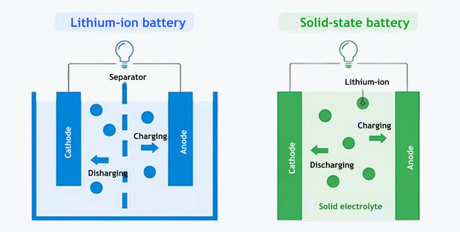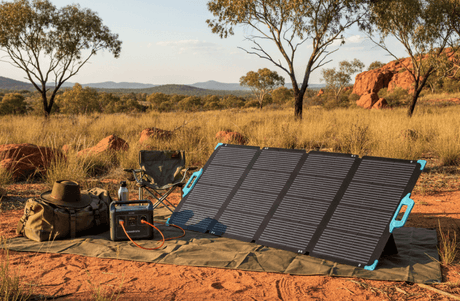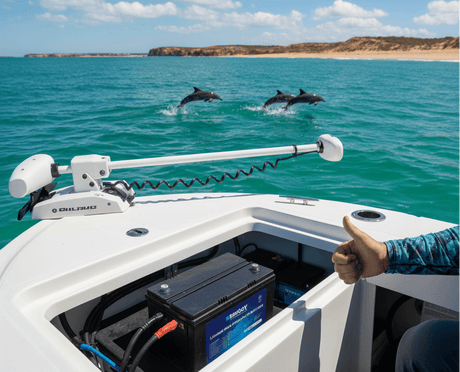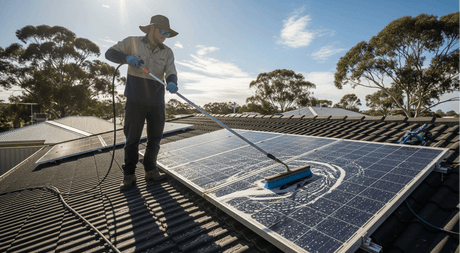As more Australians decide to live sustainably or venture out into homes in remote places that are off the grid, the use of 300-watt solar panels is becoming more common. And while this technology isn’t that new -- solar panels first started showing up in 1954 -- they have continued to evolve and improve their efficiency.
With this evolution, questions like “How many solar panels do I need to run a TV?” are not always easy to answer. There are many factors involved in solar cell power generation, from how much sunlight the panels receive daily to what type of appliances or devices need power and how often they get used.
Thankfully, when it comes to solar panel kits, there are a variety of options out there -- you can install one 300-watt solar panel or 100 of them. It all depends on your home’s usage and needs.
Sticking with our 300-watt solar panel idea, let’s go through some of the most common questions that people have before they decide on which types of solar panels to install and how many they’ll need.
How Much Power Is Generated By a 300-Watt Solar Panel?
To answer this question, we first need to do a bit of math. Let’s presume that the lovely Australian sun beats down on your monocrystalline solar panels for 8 hours per day. A 300-watt solar panel will produce approximately 2.5 kilowatt-hours per day. If we multiply the daily rate by 365 days to measure a year, we come up with close to 900 kilowatt-hours annually.
That measure of 900 kilowatt-hours is for just one 300-watt solar panel. If you install multiple panels, you would multiply the 900 kWh by the number of solar panels in use. Keep in mind that even on cloudy days, your solar panels can still produce energy. The power gathered on sunny days can be easily stored in the battery and converted with a 3000-watt inverter.
Since many appliances require a specific voltage, you may be wondering, “How many volts does a 300-watt solar panel produce?” Depending on the number of solar cells, a 300-watt solar panel can produce between 30 and 45 DC volts.
Appliances that a 300-Watt Solar Panel Can Run
For this one, let’s go back to our question about running a TV on solar panels. As we all know, TVs come in many sizes, which means that they use different amounts of energy. Luckily, even a giant 82-inch television could actually run on a 300-watt solar panel. You may want to rethink turning anything else on while the TV is on, but it’s possible!
To put this into perspective, consider that an average lightbulb runs on 60 watts. LED lights are way more energy-efficient and usually run on a fraction of that amount. An average-sized refrigerator or freezer runs anywhere from 150 watts to 400 watts, again depending on size and efficiency ratings.
Something simple like charging your mobile phone usually only takes between 4 watts and 7 watts. If you plug in a slow cooker, it’s going to use around 160 watts, while a more powerful appliance like a food blender will probably need at least 300 watts.
As you can see, one 300-watt solar panel can provide energy to a fair number of home appliances, just not all at the same time. But again, home solar panel kits include everything that you need to collect, store, and convert solar energy, which means that they won’t leave you in the dark.
What Can You Power with a 500-Watt Solar Panel?
Solar power systems that use 500-watt solar panels will produce and store more energy than their 300-watt counterparts. With a single 500-watt solar panel, you could run an electric thermal radiator, a gaming PC, a water pump, a vacuum cleaner, or a standard washing machine -- again, just not all at the same time!
Suppose that you install numerous 500-watt solar panels on your building. In that case, they can be combined to run most appliances in your home smoothly, including your refrigerator/freezer, stove, water heater, and washer and dryer.
What Can You Power with a 1000-Watt Solar Panel?
While 300-watt panels are some of the most commonly used ones for homes, many office buildings and other high energy-consuming places will want to use 1000-watt solar panels.
If we use our earlier calculation, a 1000-watt solar panel will produce around 8.3 kWh per day when it receives 8 hours of sun. If you multiply that by 365, you get over 3,000 kWh annually from one 1000-watt solar panel.
That means a 1000-watt solar panel can power just about anything within reason, from a sandwich maker to a laser printer to a small air conditioner. Again, keep in mind that we’re talking about one solar panel’s capacity. When you install many 1000-watt solar panels, you’ll multiply your capacity significantly.
How Many Solar Panels Do I Need to Go Off-Grid?
This question is one that you will ultimately have to determine on your own. To make it easier for you, our solar panel calculator can help to calculate your needs when you plan to use off-grid solar energy.
All you need to do is type in the total wattage of the electronics you will use, the number of hours they will run, your charge controller efficiency, and the average hours of sun that your location receives daily. If you live in or around Perth, you’re in luck, as it’s the sunniest spot in all of Australia!
Based on these estimations, we can provide you with a kit for your tiny home solar needs or small solar panel kits if you’re looking for something for your RV or van while you’re travelling.
It’s important to remember that if you are off-grid during the winter months, you’ll need a solar panel system that can compensate using fewer daylight hours. Also, if you live in cloudier parts of Australia, such as Melbourne, you’ll need to factor that in, as well.
How Do I Know How Many Panels I Need?
For those who plan to use solar energy and stay on the grid, it’s possible to choose from a wide variety of solar power systems. The average Australian home consumes 19 kWh per day, which equals 6,935 kWh per year. If you plan to install 300-watt solar panels to power your entire home and each one provides 900 kWh per year, you would need eight solar panels.
If the idea of installing eight solar panels is overwhelming, you can always install just a couple to start and see how things go. A great way to measure how effective your solar panels are is to keep a close watch on your monthly electric bill. The more panels you install, the lower your bill will be each month.
One of Australia’s sustainable development goals for 2030 is affordable and clean energy. What better way to help contribute to the cause than by creating affordable and clean energy in your own home with solar installation! And with quality customer service available from Renogy, you’ll never have to worry about being left in the dark.





![What Is a DC to DC Battery Charger [Comprehensive Guide]](http://au.renogy.com/cdn/shop/articles/IMG_3829_bd86de74-31d6-49fd-b9d5-265bb723091d.jpg?v=1757582605&width=460)



